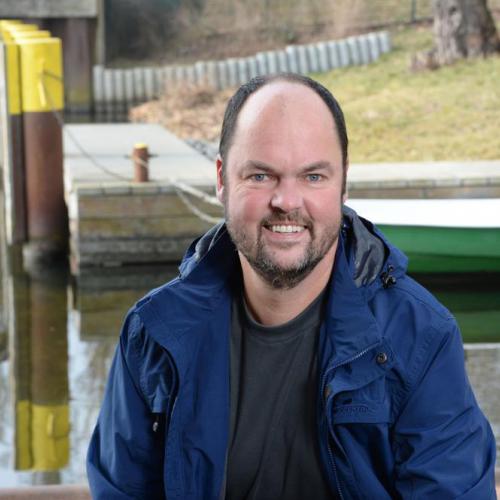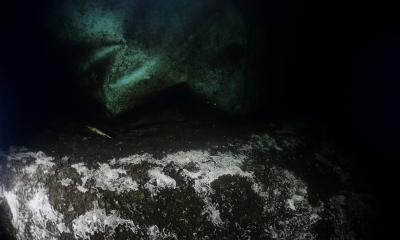Long-term development of lakes as a result of climate change
Short profile
Duration
Background
Climate change is changing our lakes. Increasing air temperatures will lead to higher temperatures in the water. In turn, lakes remain stratified for a longer period of time during Summer and Autumn, and ice cover will shorten or cease completely. These changes in the physical conditions will also affect biology and biogeochemistry. High summer temperatures can cause algae blooms. A longer stratified period leads to hypoxia in the deepwater which reduces the habitable area for fishes and can release nutrients and toxic substances such as Manganese from the sediments.
In this project, the effect of climate change on the physical processes of lakes will be investigated. Several lakes with a diverse set of boundary conditions (e. g. differing mean depth or different wind exposure) will be instrumented with logger chains. They will measure temperature and oxygen in high resolution and make it possible to resolve changes in physical conditions in response to varying climatic forcing. In addition to direct measurements, numerical models can be used to reproduce water temperatures in lakes. Here, the empirical data obtained by the temperature chains can be used for calibration. In combination with regional climate predictions for the 21st century, these models make it possible to predict lake temperatures for possible future air temperatures according to differing greenhouse gas emission scenarios.
Methods
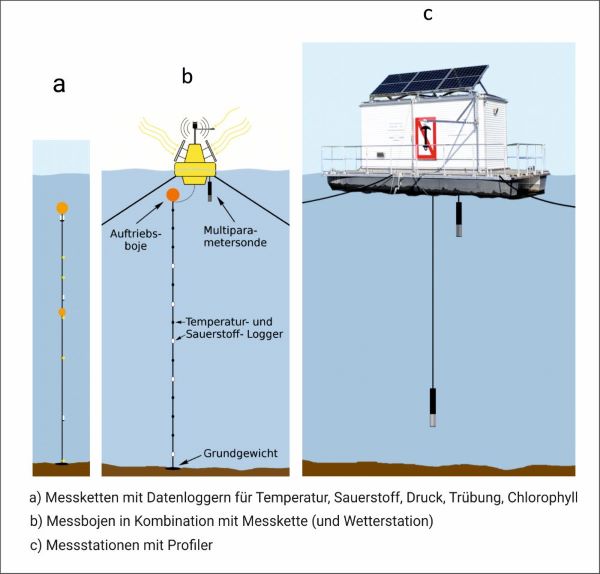
In total, 14 lakes were equipped with moorings containing temperature and oxygen logges. The loggers are measuring autonomously. Every year, we clean the sensors, download the data and replace the batteries if necessary.
In addition, long-term monitoring data from 116 lakes were collected in close collaboration with the environmental agencies of the German states. Many of these lakes - in total 45 - cover a period of more than 30 years in monthly or bimonthly resolution. Besides temperatures, oxygen, phosphorus content and chlorophyll concentration was measured in many cases.
The data were used to calibrate numerical models which reproduce temperature changes in the lakes until the year 2100 based on different IPCC emission scenarios.
Results
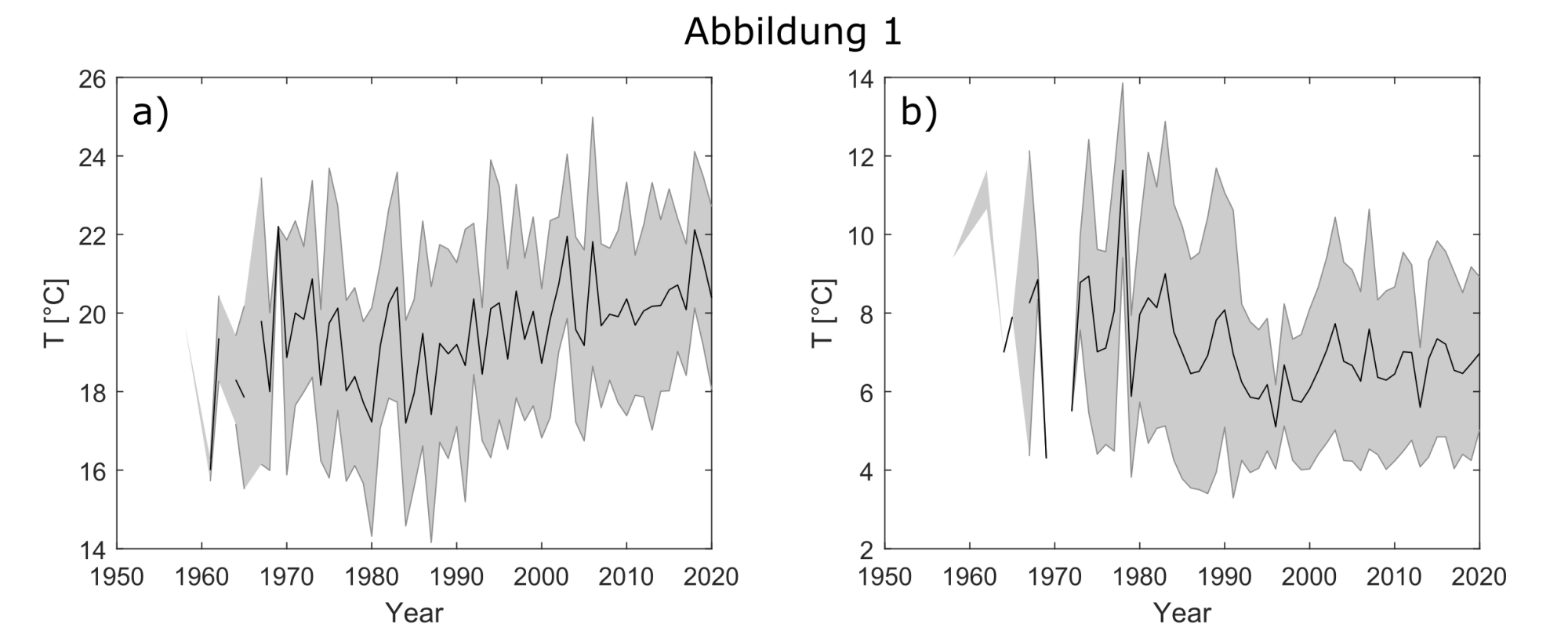
In average, lakes surface temperatures increased by 0.5°C/Decade since 1990. In contrast, bottom temperatures remained almost unchanged (Figure 1). Highest changes at the surface were measured in summer and fall which indicates a stronger summer stratification in dimictic lakes. At the end of the stratified period, oxygen concentrations were low in most lakes. Other parameters such as chlorophyll showed only weak trends and depended strongly on local conditions.
The high-frequency measurements allowd the exact measurement of the duration of summer stratification. Here we found that the end of stratification depended strongly on lake depth while the onset of stratification was controlled in all lakes universally by wind and air temperatures.
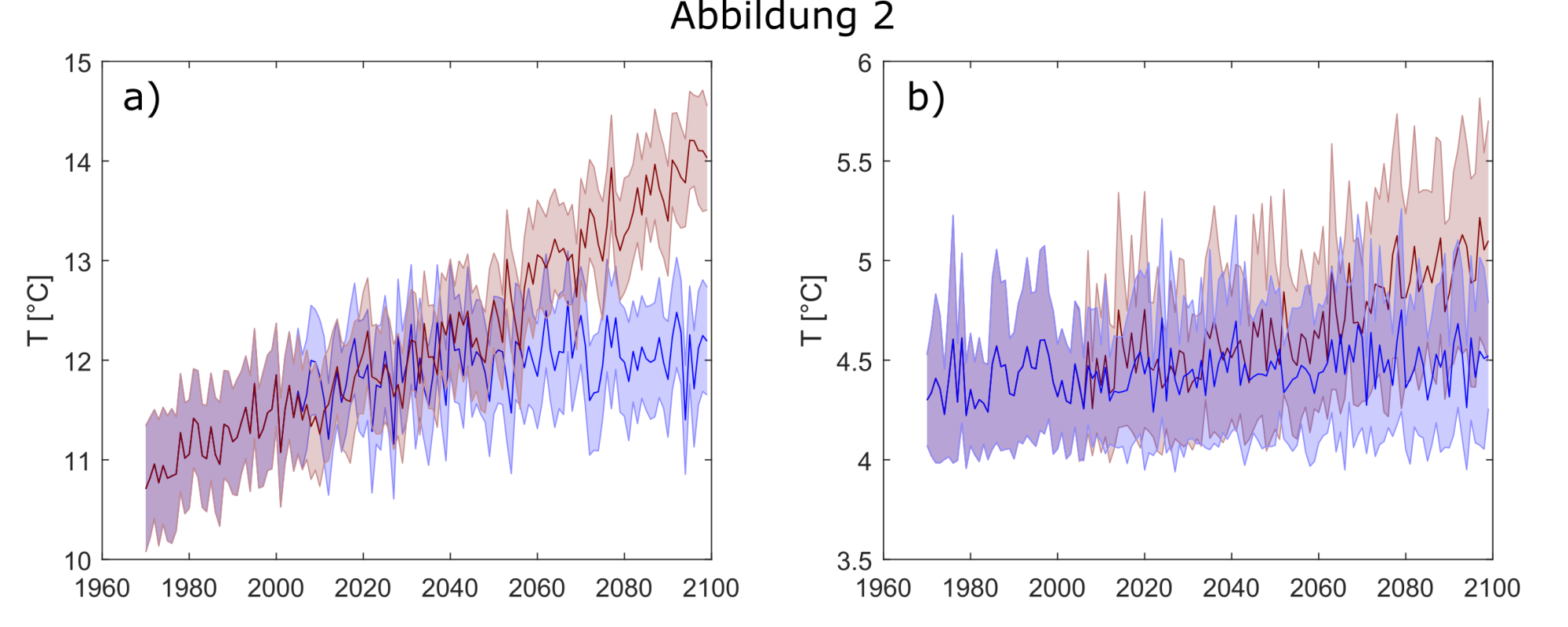
Numerical simulations confirmed the observed trends. Assuming a continous increas in CO2-concentrations until the end of the century ("business-as-usual"-scenario RCP 8.5), surface temperatures will continue to increase by 0.3°C/decade while deep water temperatures remain relatively constant. In the optimistic scenario RCP 2.6 (assuming a limitation of air temperature increase to 2°C until the end of the century), lake temperatures remained largely constant compared. The increasing temperatures in RCP 8.5 result in an increasing duration of the stratified period during summer and therefore in lower oxygen concentrations in the hypolimnion. Ice-cover duration during winter would drastically shorten.
Outlook
In a next step, the impact of physical changes on the ecosystems of lakes will be investigated. Especially the development of the oxygen content and the development of toxic cyanobacteriy will be researched. In addition, we will investigate changes in the water level of lakes and test, if in situ monitoring systems can be complemented by remote sensing data from satellites.
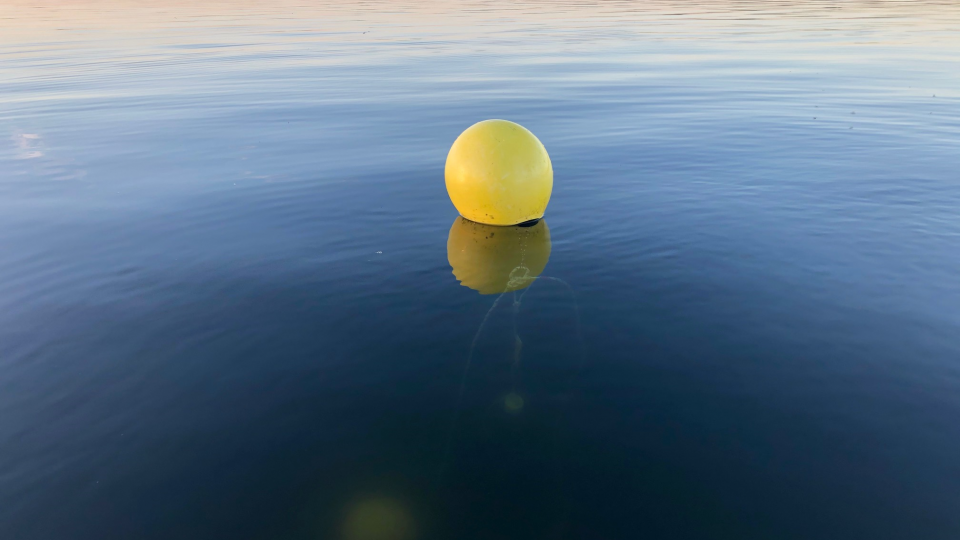
Surface buoy at Lake Plöner See
Maintenance at Lake Peetzsee

Temperatures at the deepest point of Lake Arendsee in 2018
Länderarbeitsgemeinschaft Wasser (LAWA- AK)


